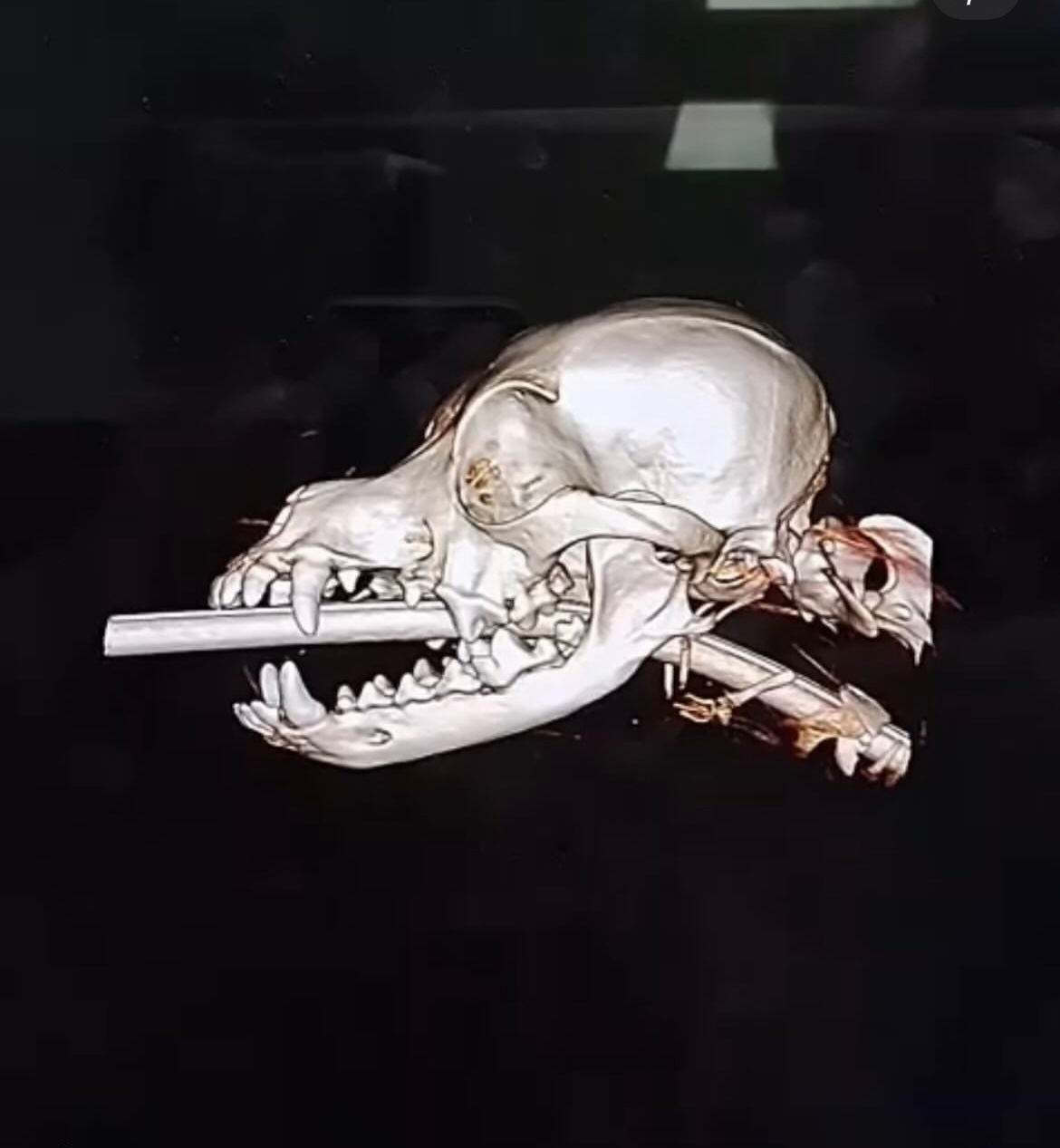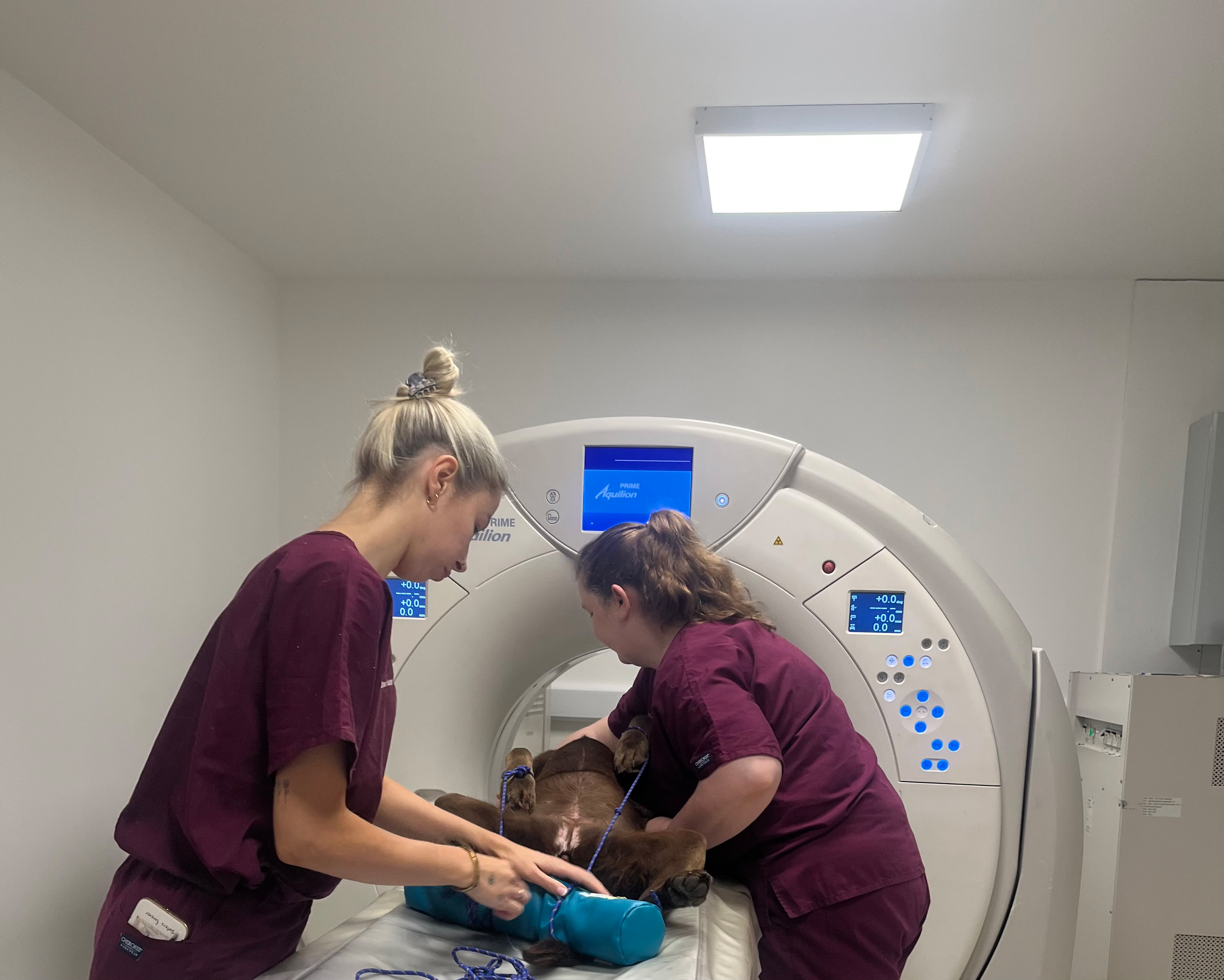
For those pets who are unwell we have veterinary surgeons and nurses with years of experience and knowledge in diagnosing and treating sick pets. To aid in diagonosis we have a full range of additional diagnostic tools from an inhouse laboratory, ultrasound, x-ray to a CT machine to be used if needed.
REASONS FOR USING CT SCAN
CT scan is recommended if simple imaging techniques, like X-rays or ultrasounds, aren’t enough to diagnose or treat your pet’s condition. CT scans are also helpful for planning a complex surgery.
Here are some common conditions that benefit from CT scanning:
- Tumors - Diagnosis and pre-surgical planning
- Nasal or sinus conditions
- Inner ear disease
- Portosystemic shunts
- Ectopic Ureters
- Traumatic injuries
- Imaging bones and joints
- Complex fractures
- Spinal injuries and intervertebral disc disease (IVDD)
BENEFITS OF USING A CT SCAN:
CT scans have several advantages over other pet imaging techniques:
- Three-dimensional images: X-rays can superimpose two body areas because the images produced are two-dimensional, distorting the result. CT scans eliminate this artifact by providing “slices” reconstructed into a three-dimensional image.
- Fine detail: CT scans allow for the evaluation of greater detail than X-rays.
- Deep structure assessment: CT scans can help examine areas that are difficult to X-ray or ultrasound, such as the sinuses or inner ear.
- Safety: CT scans are non-invasive and quick.

CT Scan FAQs
Is it worth getting a CT scan ?
Getting a CT scan is an individual decision dependent on your finances and preferences. In most cases, vets can gain helpful information from a dog CT scan to guide their treatment recommendations.
Is anaesthesia necessary for a CT scan?
Pets must go under anesthesia during a CT scan for their safety and comfort, and to prevent them from moving. However because a CT scan is quick and non-invasive this should not be a major concern. If it is considered that your pet is an anaesthetic risk then bloodwork and other diagnostic tests may be recommended before the CT scan is performed.
What happens when a dog has a CT scan?
- Patients will be placed under general anaesthetic. The scan itself is very rapid and the animal will be closely monitored by our dedicated team of Vets and Veterinary Nurses.
- Sometimes a special contrast media (dye) needs to be injected into the veins in order to visualise soft tissue structures more clearly.
- Myelogram and CSF taps can be performed at the same time if required.
- Images requiring detailed expert interpretation will be sent to a specialist. Most reports will be back within 72hrs but urgent cases can be interpreted within 24 hrs.



